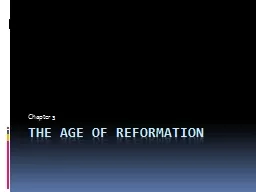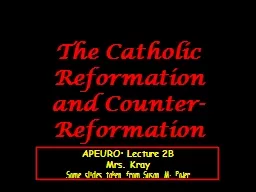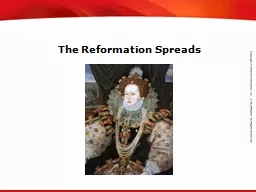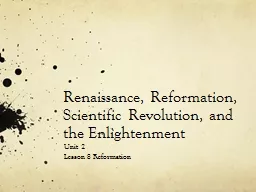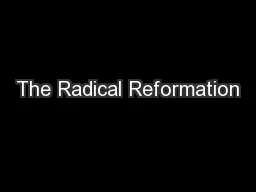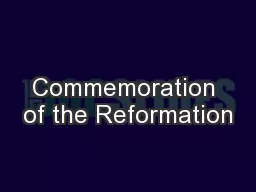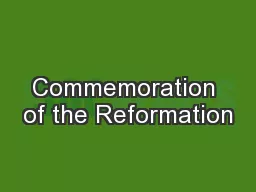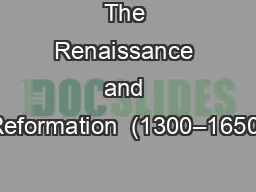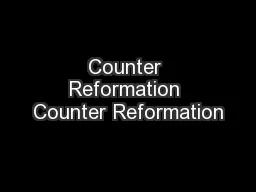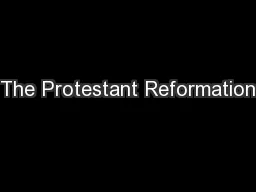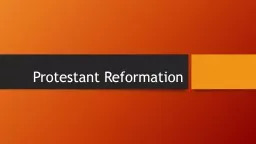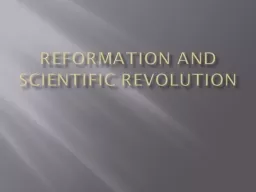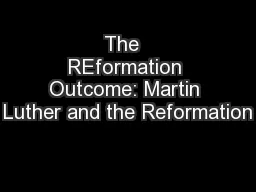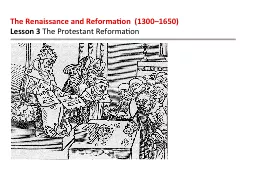PPT-The Age of reformation
Author : trish-goza | Published Date : 2016-06-15
Chapter 3 PreReformation developments Challenges to the Medieval church The Avignon Popes and the Great Schism Secular papacy and worldliness in churchsimony and
Presentation Embed Code
Download Presentation
Download Presentation The PPT/PDF document "The Age of reformation" is the property of its rightful owner. Permission is granted to download and print the materials on this website for personal, non-commercial use only, and to display it on your personal computer provided you do not modify the materials and that you retain all copyright notices contained in the materials. By downloading content from our website, you accept the terms of this agreement.
The Age of reformation: Transcript
Download Rules Of Document
"The Age of reformation"The content belongs to its owner. You may download and print it for personal use, without modification, and keep all copyright notices. By downloading, you agree to these terms.
Related Documents

